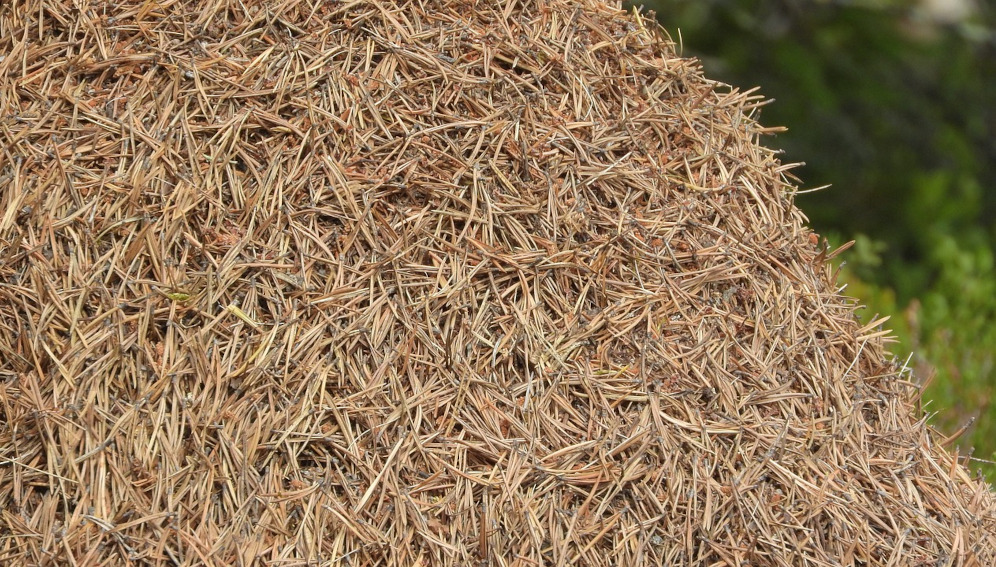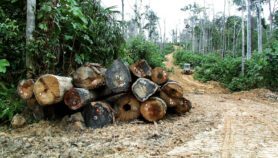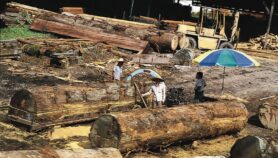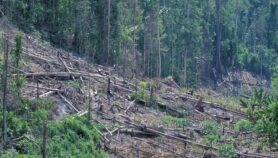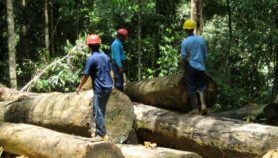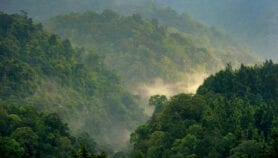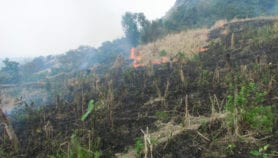By: Ranjit Devraj
Send to a friend
The details you provide on this page will not be used to send unsolicited email, and will not be sold to a 3rd party. See privacy policy.
[NEW DELHI] The flammability of pine needles, a major fire hazard in the coniferous forests of India’s vast sub-Himalayan belt, makes them an abundant source of renewable energy, say researchers.
Fallen pine needles need to be removed from forest floors because they can ignite during dry spells and set off devastating forest fires, say the researchers from India’s state-run Central Institute of Agricultural Engineering (CIAE).
Their study, published in Current Science, looked at how the charring and briquetting of pine needles could potentially help reduce greenhouse gas generation.
“The resulting dryness and the oil content of the pine needles make them instantly catch fire, often resulting in immense losses to biodiversity, forests, environment and the local economy.”
Arti Kashyap, associate professor, IIT-Mandi
Lead researcher Sandip Mandal, senior scientist at the agricultural energy and power division of the CIAE in Bhopal, India, tells SciDev.Net: “Pine needles can be easily compacted into high calorific value briquettes that can be used for any thermal application or processed to yield high-quality biofuel through chemical processes.”
Through pyrolysis — a process that involves heating organic matter in the absence of oxygen — pine needles can be converted into bio-oil at a calorific value of 28.52 megajoules per kilogramme and used in blended fuels for internal combustion engines or as furnace oil, the study found.
In comparison, the calorific value of diesel is roughly 45.5 megajoules per kilogramme.
“The flash point, fire point and pour point values of bio-oil were higher than those of high-speed diesel,” the study said, adding that the oil was also suitable for widely used compression injection engines.
Alternatively, briquettes made from the needles can be used in brick kilns or to fire boilers that generate electricity as well as provide a clean, affordable fuel for domestic cooking.
Briquetting involves the densification of so-called “lignocellulosic” biomass, derived from dry plant matter, into blocks that have high calorific value and can be stored and transported.
Biomass tops other sources of renewable energy such as solar, wind and hydro because of its sheer abundance, the study says.
Pyrolysis of pine needles also produces biochar which is an ideal material for soil carbon sequestration and can contribute to mitigating climate change, according to the researchers.
The analysis showed that energy efficiency of 87 per cent can be achieved by combining the three conversion technologies considered — briquetting, charring and pyrolysis.
Exploiting pine needles
Pine needles differ from other types of plant biomass in that they are not easily decomposed by microbes and accumulate on the forest floor.
The study estimates that about 6.3 tonnes of pine needles fall on each hectare of pine forests during the Indian summer season.
Himalayan subtropical pine forests stretch through most of the 3,000-kilometre length of the world’s highest mountain range covering over 77,700 square kilometres in Pakistan, the Indian states of Jammu and Kashmir, Himachal Pradesh, Uttarakhand, Sikkim and Arunachal Pradesh as well as in Nepal and Bhutan.
Within India, much of the research and activity aimed at commercially exploiting pine needles is concentrated in northern Himachal Pradesh state which has nearly 3,300 square kilometres of pine forests, shedding some 1,300 metric tonnes of pine needles annually.
Most of these forests are made up of the dominant and drought-resistant Pinus roxburghii species.
According to the Himachal Pradesh government, an average of 2,000 forest fires are reported in the state each year.
Between 2001 and 2021, Himachal Pradesh lost more than 900 hectares of tree cover from fires. The most severe losses were in 2004, when 150 hectares were destroyed, according to Global Forest Watch data.
Recognising the potential of pine needles as a source of renewable energy and their role in causing forest fires, the Indian Institute of Technology (IIT) in Mandi, the capital of Himachal Pradesh, runs a special programme at its Uplifting Himalayan Livelihoods centre.
“During the April to June summer season, falling pine needles hinder percolation of water to the forest floor,” says Arti Kashyap, associate professor at IIT-Mandi.
“The resulting dryness and the oil content of the pine needles make them instantly catch fire, often resulting in immense losses to biodiversity, forests, environment and the local economy.”
The dense layer of pine needles also stops sunlight from reaching the ground, preventing the growth of grass and making it difficult for local villagers to graze their cattle, says Kashyap.
“This leaves the villagers with no option other than setting the needles on fire,” she adds.
Kashyap says the IIT-Mandi programme focuses on collecting pine needles and transporting them to processing centres, which is problematic in the hilly terrain of Himachal Pradesh.
‘We believe that setting up small pelletisation or briquetting units spread all over is the most viable option and important for providing local livelihoods,” she says.
Over many studies and trials, IIT-Mandi has developed a method of chopping up and compressing the pine needles to make clean, dense and easily manageable briquettes that have high demand as fuel, explains Kashyap, adding that an application for a patent was underway.
This piece was produced by SciDev.Net’s Asia & Pacific desk.


